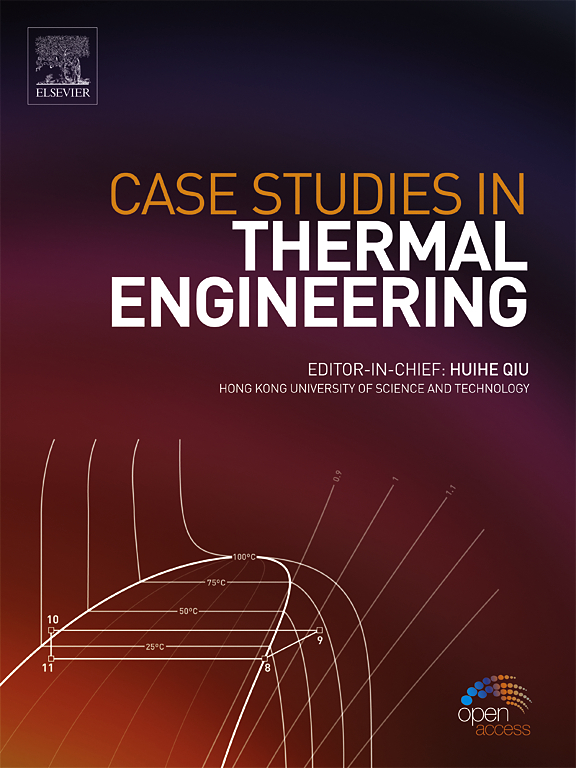The thermal performance of a typical prefab container house
IF 6.4
2区 工程技术
Q1 THERMODYNAMICS
引用次数: 0
Abstract
Prefabricated container houses have been widely used in recent decades, particularly at construction sites. To improve their energy efficiency, the thermal deficiencies of a typical prefab container house were firstly analyzed using infrared thermography. Detailed measurements of the thermal behavior of its envelope were conducted, focusing on thermal bridges, air infiltration rates, and window solar heat gains. The energy consumption from various sources were then calculated based on the measured data. It showed that there were thermal bridges near the joint of the walls and the panels. The reserved space for rainwater pipes and cables, as well as the panel connecting seams, were inadequately insulated, resulting in higher surface temperatures and heat fluxes compared to the adjacent walls. The energy consumption from the windows, the thermal bridges and air infiltration accounted for around 50 % of the total energy consumption. The thermal bridge insulation structures could reduce more than 60 % and around 40 % energy consumptions of the corners and the seams. The external louvers could reduce around 40 % energy consumption of the windows. After the energy-saving retrofit, the total energy consumption of the prefab house was reduced by approximately 25.9 %.
典型预制集装箱房屋的保温性能
近几十年来,预制集装箱房屋得到了广泛应用,尤其是在建筑工地。为了提高其能源效率,我们首先使用红外热成像技术分析了典型预制集装箱房屋的热缺陷。对其围护结构的热行为进行了详细测量,重点是热桥、空气渗透率和窗户的太阳辐射热获得。然后根据测量数据计算了各种来源的能耗。结果表明,在墙壁和面板的连接处存在热桥。雨水管和电缆的预留空间以及面板的连接缝保温不足,导致表面温度和热通量高于相邻墙壁。窗户、热桥和空气渗透产生的能耗约占总能耗的 50%。热桥隔热结构可减少 60% 以上的能耗,边角和接缝处的能耗可减少约 40%。外百叶窗可减少窗户约 40% 的能耗。节能改造后,预制房屋的总能耗降低了约 25.9%。
本文章由计算机程序翻译,如有差异,请以英文原文为准。
求助全文
约1分钟内获得全文
求助全文
来源期刊

Case Studies in Thermal Engineering
Chemical Engineering-Fluid Flow and Transfer Processes
CiteScore
8.60
自引率
11.80%
发文量
812
审稿时长
76 days
期刊介绍:
Case Studies in Thermal Engineering provides a forum for the rapid publication of short, structured Case Studies in Thermal Engineering and related Short Communications. It provides an essential compendium of case studies for researchers and practitioners in the field of thermal engineering and others who are interested in aspects of thermal engineering cases that could affect other engineering processes. The journal not only publishes new and novel case studies, but also provides a forum for the publication of high quality descriptions of classic thermal engineering problems. The scope of the journal includes case studies of thermal engineering problems in components, devices and systems using existing experimental and numerical techniques in the areas of mechanical, aerospace, chemical, medical, thermal management for electronics, heat exchangers, regeneration, solar thermal energy, thermal storage, building energy conservation, and power generation. Case studies of thermal problems in other areas will also be considered.
 求助内容:
求助内容: 应助结果提醒方式:
应助结果提醒方式:


